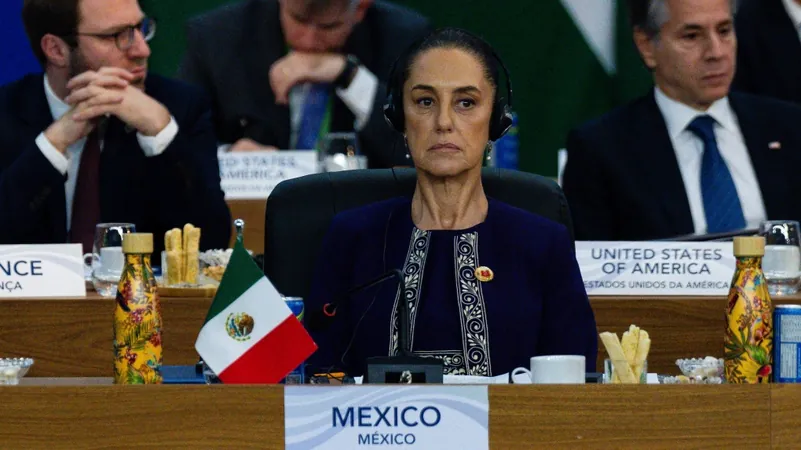
Tensions Rise Between NASA and Roscosmos Over ISS Leak: What's at Stake?
2024-12-02
Author: Charlotte
Tensions Rise Between NASA and Roscosmos Over ISS Leak: What's at Stake?
NASA and Roscosmos are embroiled in a serious dispute regarding a troubling leak in the Russian segment of the International Space Station (ISS). This leak, which has persisted for five years in the service module tunnel (also referred to as the PrK module) connecting the Russian section to the main structure of the ISS, is becoming more severe. Both space agencies are at an impasse over how to address it and even disagree on the severity of the issue.
A report from September 2024 by NASA’s Office of the Inspector General warns that “cracks and air leaks in the tunnel are a top safety risk.” While both agencies are reportedly collaborating to investigate and mitigate the situation, they are not on the same page regarding the urgency of the issue. According to the ISS Vehicle Office and their Russian counterparts, the current leakage does not present an immediate threat to the overall structural integrity of the ISS, although concerns remain for the long-term stability.
NASA's assessments indicate that air is escaping at a concerning rate of 0.9 to 1.1 kilograms per day, with a troubling spike to 1.7 kilograms observed in April. This escalation prompted NASA to classify the transfer tunnel leak as the highest level of risk within the space station program’s risk management system. Notably, a lack of consensus remains between NASA and Roscosmos regarding the conditions under which the leak would be deemed untenable.
Meanwhile, concerns have escalated about the future operational status of the ISS. NASA aims to keep the station functional until 2030, while Russia has not committed to extend operations beyond 2028. As the ISS ages, its maintenance demands are rising significantly. Bob Cabana, chairman of NASA’s International Space Station Advisory Committee, addressed this issue at a public hearing, emphasizing the lack of agreement between the two agencies on the leak's root causes and its potential impacts. While Roscosmos suggests high cyclic fatigue from micro-vibrations may be the culprit for the cracks, NASA suspects a combination of multiple factors, including pressure and mechanical stress.
In a curious incident that further highlights the Russian segment's troubles, Russian cosmonauts aboard the ISS recently reported an unpleasant odor emanating from a Progress cargo spacecraft shortly after docking. Upon opening the hatch, they noticed strange droplets and sealed off the module to prevent contamination. NASA attributes this odor to “outgassing from materials inside the cargo spacecraft.”
Despite the spotlight often shining on NASA-led missions, Roscosmos has been grappling with its own set of challenges, including recent incidents of coolant leaking into space from their spacecraft—a risk that raises eyebrows given the current leak issues.
As the four ISS partners—namely the USA, Russia, the European Union, and Japan—each invest in the station's upkeep based on their contributions, the financial implications are also significant. By 2022, the US had already invested $118 billion in the ISS, and any extension beyond 2030 will likely necessitate additional funding, with a focus on managing the increased risks associated with aging components.
With the ongoing frictions between NASA and Roscosmos, the future of the ISS hangs in the balance, leaving unanswered questions about its safety and operational viability. As we approach an era where private space ventures are on the rise, could this discord spark a race for alternatives in space exploration? Only time will tell!









 Brasil (PT)
Brasil (PT)
 Canada (EN)
Canada (EN)
 Chile (ES)
Chile (ES)
 España (ES)
España (ES)
 France (FR)
France (FR)
 Hong Kong (EN)
Hong Kong (EN)
 Italia (IT)
Italia (IT)
 日本 (JA)
日本 (JA)
 Magyarország (HU)
Magyarország (HU)
 Norge (NO)
Norge (NO)
 Polska (PL)
Polska (PL)
 Schweiz (DE)
Schweiz (DE)
 Singapore (EN)
Singapore (EN)
 Sverige (SV)
Sverige (SV)
 Suomi (FI)
Suomi (FI)
 Türkiye (TR)
Türkiye (TR)